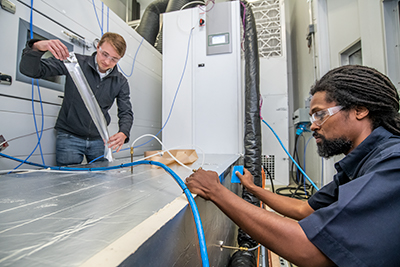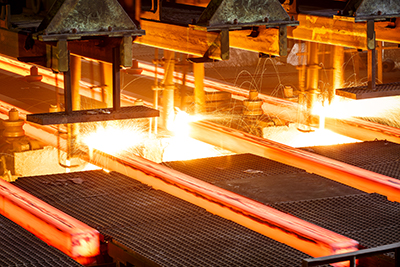Energy Efficiency
Appliance and Equipment R&D and Performance Assessment

We support research on current high-efficiency products to help determine the performance of advanced designs, as well as development and fabrication of prototypes based on state-of-the-art research and practices to test the viability of next-generation products. We test existing products to assess their performance, verify product efficiency, and evaluate and describe why product performance and efficiency may not meet stated technical specifications. We also develop new testing protocols and test methods to fully account for advanced and more efficient designs whose benefits are not currently captured by existing test procedures.
We also develop new testing protocols and test methods to fully account for advanced and more efficient designs whose benefits are not currently captured by existing test procedures.
Efficient Industrial Systems
Next-generation manufacturing has the potential to strengthen the economy. We conduct decision analysis support and develop analytical tools designed to enable the identification, development and adoption of technologies and strategies that have the potential to:
- Improve energy-water-materials efficiency
- Reduce the emissions
- Enhance competitiveness across various sectors in the industrial economy

Examples of ongoing projects include strategic analysis support for U.S. Department of Energy’s Advanced Manufacturing Office, development and maintenance of the Lifecycle Industry GreenHouse gas, Technology and Energy through the Use Phase (LIGHTEnUP) tool, scenario analysis modeling of emerging water desalination technologies, and energy use modeling for the U.S. data center sector.

Energy Saving Performance Contracting
We work in partnership with the National Association of Energy Service Companies to conduct strategic assessments of industry performance and market trends for Energy Service Companies (ESCOs) and manage the largest database of ESCO projects in the world. ESCOs achieve significant cost-effective energy and water savings for end-use customers, primarily through performance-based contracting that guarantees annual energy savings levels. Our secure web-based data standardization and tracking system, eProject Builder (ePB), enables users to collect and report comparable financial and performance parameters for ESCO projects across all market sectors, including federal, state, local, K–12, universities and colleges, public housing, health, industrial, and private commercial.
Other Efficiency Research
Achieving improvements in efficiency and load flexibility that offer the greatest benefits to consumers, utility systems, and society at large for the lowest cost requires careful and unbiased research, and analysis. Specific areas of work include:
- Analyzing what it costs to save energy through efficiency programs funded by utility customers
- Projecting future program spending and savings
- Assessing the time-sensitive and locational value of energy efficiency
- Determining the impacts of energy efficiency programs through evaluation, measurement, and verification
- Analyzing the role of financing in driving energy efficiency, financing programs and products, and ways to advance private capital investment
- Providing technical support to state public utility commissions and energy offices that oversee energy efficiency programs
